Intel has officially released its first discrete graphics card, Iris Xe Max,Cover both mobile and desktop versions,The former will be used for thin and light notebooks equipped with 11th generation Core processors,Launched in early 2021。
Officially claimed,This graphics card can exceed MX350。It can be simply understood as an overclocked version of Gen12 Xe core graphics with independent video memory。Acer Swift 3x now equipped with Intel Iris Xe Max、Asus VivoBook Flip TP470、Dell Inspiron 15 7000Two-in-one computers are available。
Iris Xe MAX is manufactured using 10nm SuperFin process,Have up to 768 stream processors,Core frequency mobile version is 1.35GHz,The desktop version can reach 1.65GHz and supports 4GB of LPDDR4X graphics memory。in addition,The graphics card also supports DX12.1、PCLE 4.0、Independent graphics and core graphics in parallel、Video encoding, etc.。In terms of game performance,Intel claims to surpass Nvidia MX350。
From the perspective of positioning,The main competitor of the Iris Xe Max is Nvidia MX350、MX450、AMD's upcoming Lucienne and Cezanne series APU core graphics。

Game aspects,Intel says,Iris Xe Max can provide 1080p resolution images in a variety of popular games,Its GPU can beat laptops using Nvidia MX350,But Nvidia graphics card consumes more power。
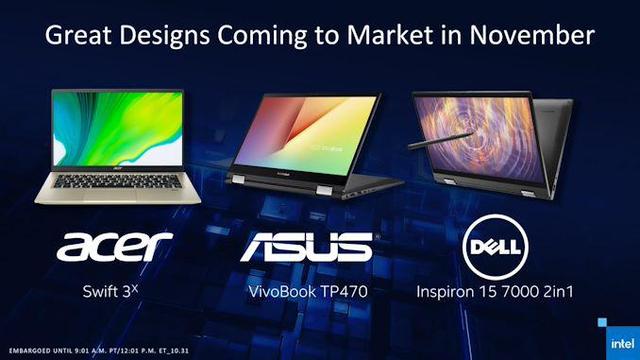
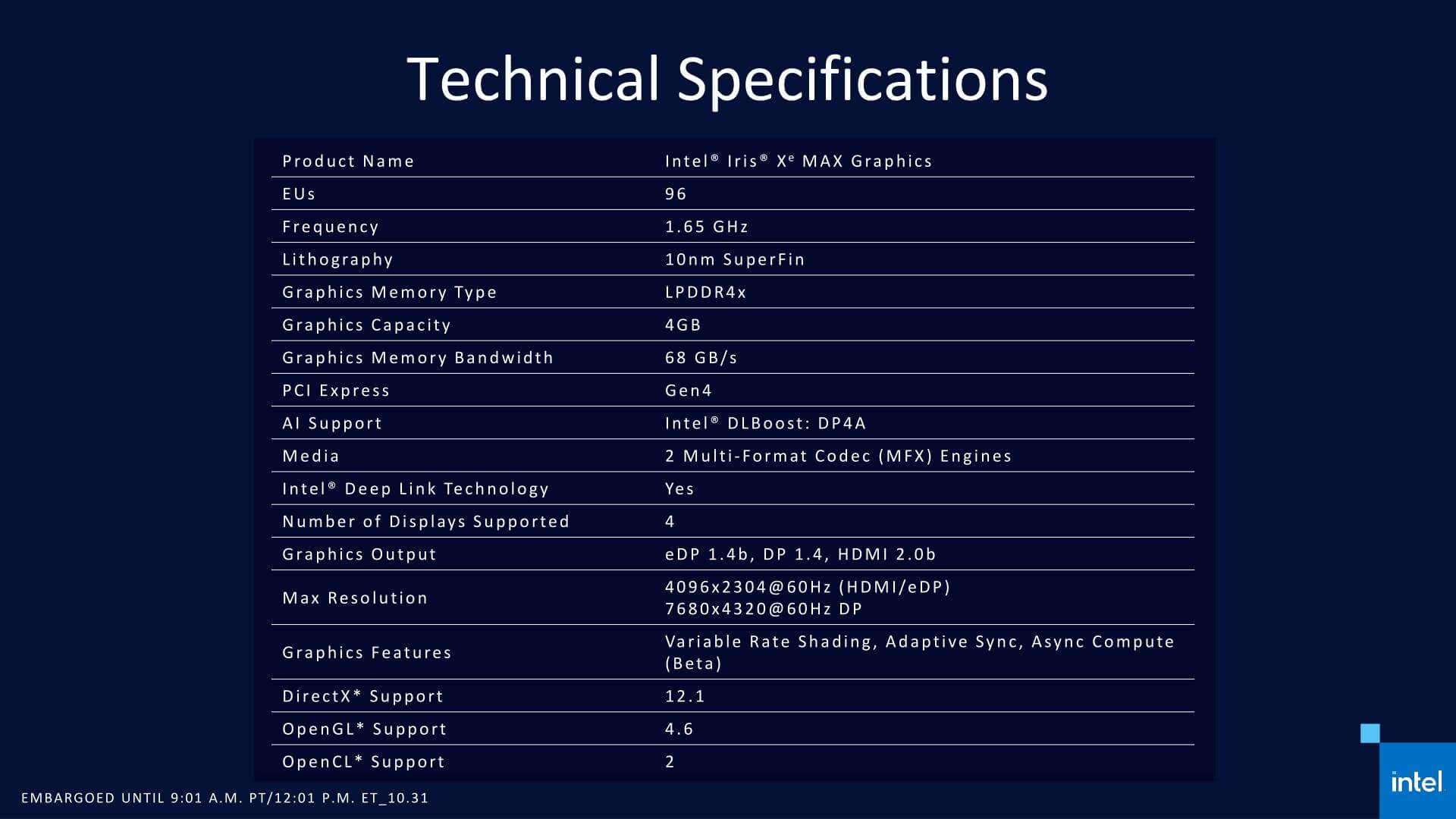

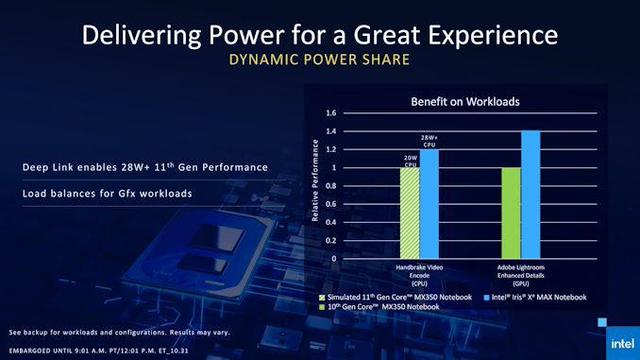
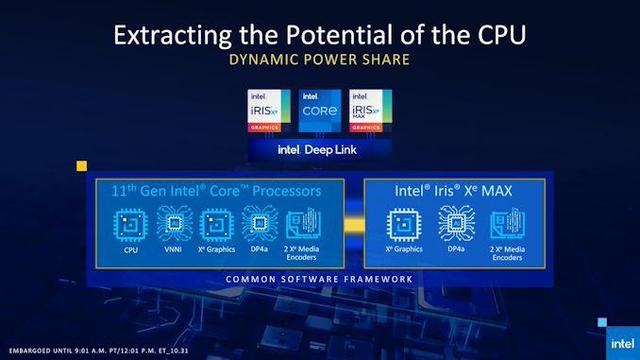
also,Iris Xe Max supports Intel Deep Link technology (similar to fire exchange,Calling the independent display at the same time、Core graphics and CPU),This technology can use a common software framework to improve video encoding equivalent,This helps Intel's processors and GPUs better cooperate。
Intel says,Its GPU can execute Hyper Encode,Its encoding speed is 1.78 times faster than Nvidia GeForce RTX 2080 graphics card。Intel says it will offer promotions that bundle creator apps and games starting November 3。
Except for Iris Xe Max,Intel also stated,It will also release DG2 graphics cards for desktop computers,It believes that the Xe graphics architecture will expand from the low-end to the high-end graphics market,Expand from game card to data center graphics card。
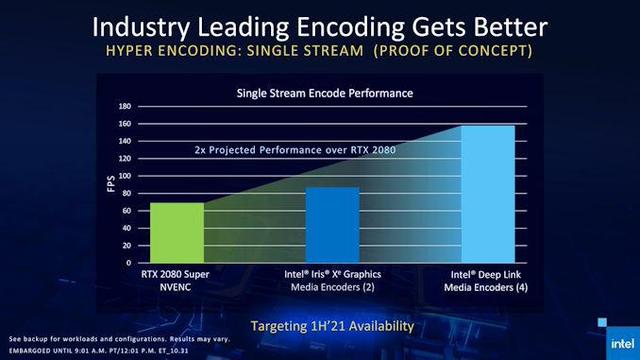
It should be noted,Intel Xe GPU architecture rebuilt by Intel for many years,Mainly divided into Xe HPC、HP car、Four product arrays, Xe HPG and Xe LP,Covered E-level supercomputer、Data Center、AI、calculate、enterprise、Ordinary users to entry-level users,Extremely wide overall performance range。The Iris Xe graphics card currently used by Intel on Tiger Lak processors belongs to the Xe LP product array,In other words, the 11th-generation Core laptops currently on sale all have new Iris Xe graphics cards built-in。
Like the eleventh generation Core processor,Xe LP also uses the new 10nm SuperFin production process,Due to the update of production process and changes in architecture,Xe LP has significant performance compared to previous Intel Gen 11 architecture、frequency、Power consumption and performance advantages。
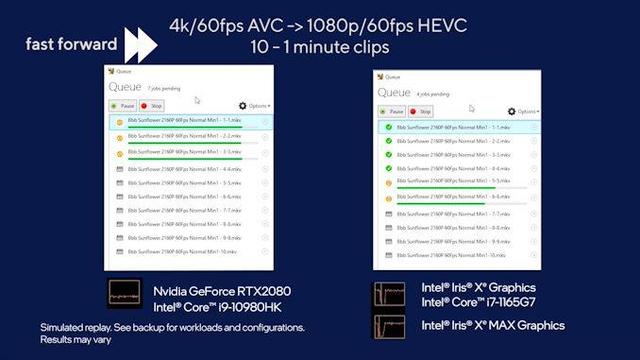
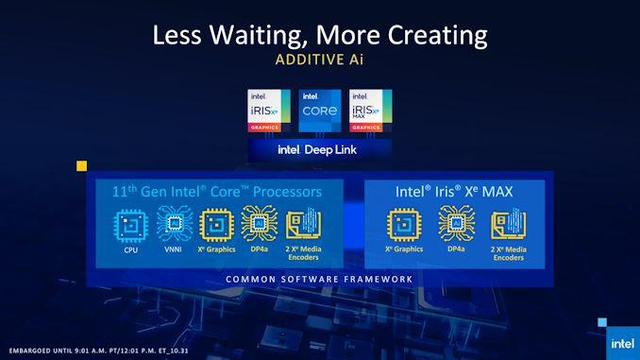
Take the Gen 11 architecture integrated with Intel's 10th Generation Core Ice Lake processor as an example,Iris Plus graphics card (Gen 11 architecture) integrated into the 10th generation Core Ice Lake processor has up to 64 EU execution units,The maximum frequency of the graphics card is only 1.1GHz,The eleventh-generation Core processor-integrated Iris Xe graphics card (Xe LP architecture) has up to 96 EU execution units,and up to 16MB of L3 cache memory。
Xe LP also supports AV1 hardware decoding,And double the delivery volume of other codec modules,This means it supports playback of up to 4K or 8K videos at a 60Hz refresh rate。In terms of external display,Xe LP supports 4 4K display channels to output the screen simultaneously,Will bring greater resolution or more monitor support、More colors and lower power consumption。
Software level,Intel Xe GPU architecture has been optimized a lot,For example, the scheduling design has been changed in terms of driver and compiler efficiency,Support AI optimization instructions,Reduced drive overhead in DX11,Reduced API latency, etc.,It also brings self-adjustment GPU optimization、Variable Rate Shading、Real-time game tuning、Game screen sharpening and other functions。
You may also be interested in the following:
- Intel Iris Xe Max Independent Display Card Review
- Intel Iris Xe Max graphics card:Deep Link technology allows independent display / core display "crossfire"
- Lenovo unveils new laptops with Intel Tiger Lake CPUs
- New Asus VivoBook Flip 14 with Intel Tiger Lake CPU and DG1 GPU
- Intel Tiger Lake will be Thunderbolt 4 compatible and launch with HP Envy x360 13 and Envy in November 13